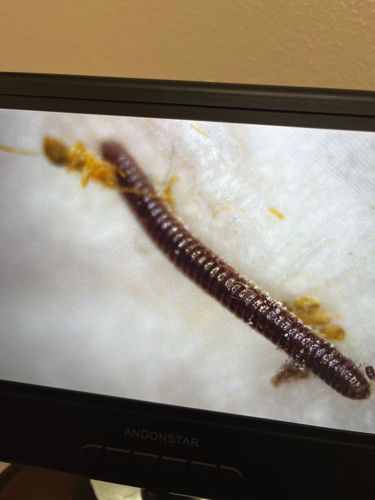Millipede
Scientific Name: Various (Millipedes belong to the Class Diplopoda, with many different orders, families, genera, and species)
Order & Family: Class: Diplopoda (not an order or family, but the appropriate taxonomic classification for all millipedes)
Size: Millipedes vary greatly in size depending on the species, ranging from a few millimeters to over 30 centimeters (e.g., the Giant African Millipede).

Natural Habitat
Millipedes are found in various damp and dark habitats including under logs, rocks, leaf litter, in soil, and sometimes in basements or other moist indoor environments.
Diet & Feeding
Millipedes are detritivores, primarily feeding on decaying plant matter, such as dead leaves, wood, and other organic debris. Some species may also consume fungi, moist decaying wood, or even small insect carcasses.
Behavior Patterns
Millipedes are typically slow-moving and prefer dark, damp environments. When disturbed, they often curl into a tight coil to protect their soft undersides. They are primarily nocturnal and active during the night.
Risks & Benefits
Millipedes are generally harmless to humans. They do not bite or sting, though some species can secrete a defensive liquid that may cause minor irritation or discoloration if handled. Ecologically, they are beneficial as decomposers, playing a crucial role in breaking down organic matter and cycling nutrients back into the soil.
Identified on: 9/4/2025